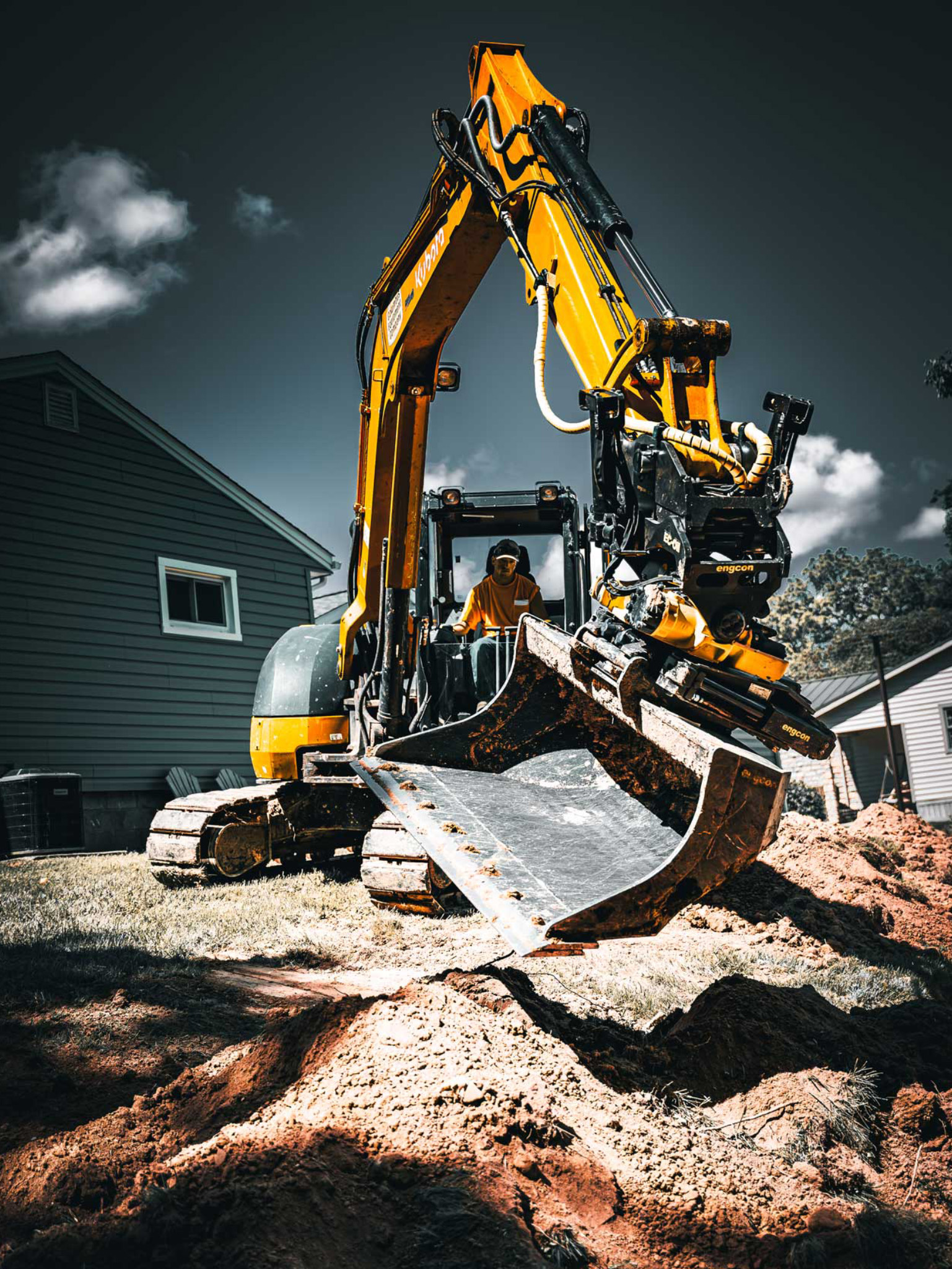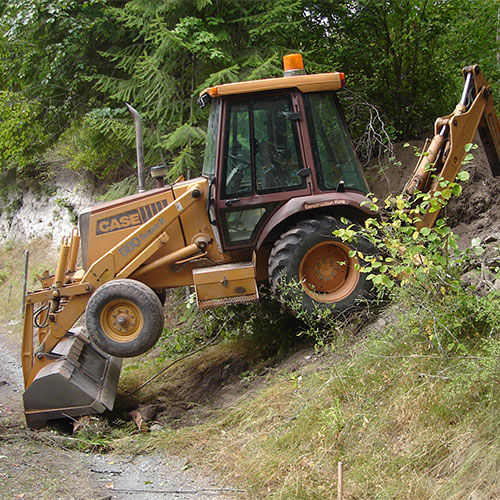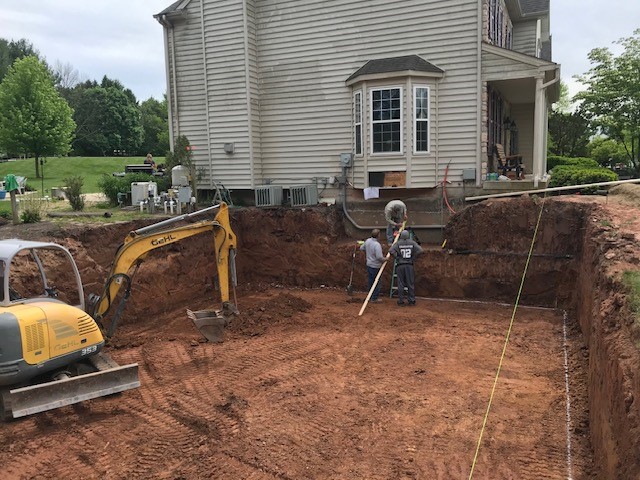Lancaster Trenching - Specialist Trenching Solutions in Lancaster, Ohio
Lancaster Trenching - Specialist Trenching Solutions in Lancaster, Ohio
Blog Article
Introducing the Art of Excavation: Pro Tips for Safe and Effective Excavating
In the realm of excavation, the mastery of safe and productive excavating is an art type that needs adherence, understanding, and accuracy to recognized practices. As soil is turned and earth is moved, the complexities of excavation reveal themselves, demanding an eager understanding of tools, dirt make-up, safety and security methods, and ecological factors to consider. The expertise required to browse these aspects successfully can imply the difference between an effective excavation job and a prospective catastrophe. By deciphering the layers of this intricate process, a world of understandings and techniques waits for those seeking to boost their excavation skills to brand-new heights.
Importance of Appropriate Tools
To make sure the safety and security and efficiency of any excavation project, using the proper tools is extremely important. Excavation projects vary in range and complexity, ranging from little property landscape design tasks to massive building tasks.
Excavators are basic items of equipment in any kind of excavating procedure. These functional equipments can be found in various sizes to fit various task demands. Mini excavators are ideal for smaller jobs, while larger excavators take on more extensive projects successfully. Backhoes are one more important equipment kind, incorporating the features of a loader and an excavator in one device. They are useful for tasks requiring convenience and ability to move.
Bulldozers stand out in jobs that require pushing huge quantities of soil or particles. By spending in the suitable tools, excavation jobs can be finished securely, on time, and with precision.
Comprehending Soil Make-up
A thorough understanding of dirt make-up is basic for executing excavation tasks with precision and safety. Understanding the different types of dirt is crucial as it directly influences excavation approaches, tools option, and total job effectiveness.
Sand bits are the biggest and supply great drain however provide little cohesion. Silt particles are smaller than sand yet bigger than clay, using modest drain and communication. Clay bits are the smallest and provide high communication yet bad water drainage. Raw material, such as decomposing plant product, influences dirt fertility and security.
Before commencing excavation, conducting dirt examinations to identify its structure and attributes is vital. This information aids in choosing the appropriate equipment, implementing precaution, and developing excavation techniques customized to the certain dirt conditions - lancaster excavation. By recognizing dirt composition, excavation experts can enhance job outcomes while making certain security and adherence to ideal methods
Safety Actions and Protocols
Recognizing soil structure is the foundation whereupon precaution and methods for excavation jobs are built, making sure the health of workers and the success of the undertaking. There are a number of crucial actions that must be executed to mitigate dangers and stop accidents. when it comes to safety and security throughout excavation.
Firstly, prior to any digging starts, a detailed evaluation of the website need to be carried out to identify any type of prospective dangers such as below ground utilities, unpredictable soil conditions, or nearby structures that might pose a threat. It is vital to have a competent person oversee the excavation process to guarantee that all safety and security protocols are complied with strictly.
In addition, all employees entailed in the excavation needs to be appropriately trained in risk-free digging practices and the proper procedure of tools. By sticking to these security steps and protocols, excavation jobs can be completed successfully and without case.
Reliable Excavation Planning
When starting an excavation project, thorough preparation is vital to ensure performance, safety and security, and successful outcomes. Reliable excavation planning involves numerous essential actions that are critical for the smooth implementation of the project. The initial action is to carry out an extensive site evaluation to identify any kind of prospective risks, such as below ground utilities or unstable soil conditions. This details is vital for establishing an in-depth excavation plan that includes security actions and run the risk of reduction methods.
When the website analysis is full, the next step is to develop a clear timeline and schedule for the excavation tasks. This consists of identifying the sequence of jobs, devices demands, and workforce allocation. Appropriate organizing helps avoid hold-ups and ensures that the job remains on track.

Moreover, communication among all team members is extremely important throughout the preparation stage. Clear instructions, normal updates, and reliable control are important for an effective excavation job. click to find out more By investing time and initiative in careful preparation, excavation teams can considerably enhance productivity, minimize threats, and attain effective outcomes.

Managing Ecological Factors To Consider
With enhancing emphasis that site on ecological sustainability in construction techniques, handling environmental factors to consider has come to be a crucial aspect of excavation tasks. Excavation activities have the possible to affect the surrounding environment with dirt disintegration, sediment overflow, environment interruption, and contamination of water resources. To alleviate these risks, it is vital to carry out best methods that focus on environmental defense.

Furthermore, proper waste management is important to avoid dirt and water contamination. Carrying out treatments for the disposal of dangerous materials, recycling of waste materials, and reducing making use of hazardous chemicals can considerably decrease the environmental influence of excavation tasks. By incorporating these methods into excavation preparation and execution, construction companies can make certain that their tasks are not only safe and productive yet additionally eco accountable.
Final Thought
Finally, understanding the art of excavation calls for a complete understanding of appropriate devices, dirt make-up, precaution, and effective preparation. By adhering to these guidelines and considering ecological aspects, excavations can be carried out securely and successfully. It is important to prioritize safety and performance in every excavating job to make sure successful end results.
As dirt is turned and planet is moved, the intricacies of excavation disclose themselves, requiring an eager understanding of equipment, dirt composition, safety and security procedures, and ecological considerations.To make certain the security and efficiency of any kind of excavation job, using the ideal tools is paramount.An extensive understanding of dirt structure is fundamental for implementing excavation projects with Look At This accuracy and security. Comprehending the various types of soil is crucial as it directly influences excavation methods, devices choice, and total project effectiveness. By recognizing soil structure, excavation specialists can enhance project results while making sure safety and security and adherence to best methods.
Report this page